Moral Truths Within ‘The Killing Joke’: Tragedy and Choice
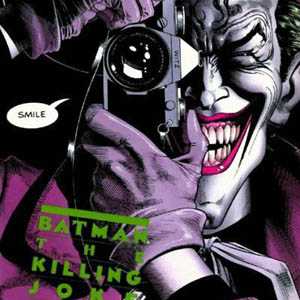
It is generally accepted that Superhero stories function as a metaphorical mirror to humanity and culture. We define the stories as they define us, looking for imprints of our own faults and successes through the lens of fantastic and fusing our own ideas about a changing society with the fantasy world. Heroes stand as a personification of our potential to do good, and grapple with the maintaining of this goodness in the face of temptation and terror. They are a map to morality, serving as guidelines to overcoming our weaker selves. Even at their lowest low, heroes still burst with the potential to redeem themselves, representing a sound faith and the drive to do the right thing. They carry an important message about what we believe we can be, ceaselessly encouraging readers to try harder and overcome.
Villains are a personification of the exact opposite. They represent human weakness, and exaggerate the flaws that drive us to do wrong. In spite of any potential for good, they are the constant calling to the darkness, to giving up, and to letting go of who you are. Comic books and their blatant exploration of this polarity can be a useful tool to finding the strength to overcome real trauma, and offer perhaps not so subtle commentary on what can happen when we allow our darkest moments to define us for the worst.
The Killing Joke
In Alan Moore’s The Killing Joke, the Joker toys with the line between hero and villain, and what these two polar drives create in a person’s psyche. He and Batman stand on two ends of the spectrum, the representation of good and the representation of evil, both created out of a common experience: loss. The Joker recognizes the existence of both potentials within people, and tries to make the point that “one bad day” can push someone over the edge and inspire them to unlock a darker version of themselves. He kidnaps Police Commissioner Gordon; forcing him to watch as his daughter is paralyzed and assaulted while dragging him through a carnival of horrors. All the while readers are taken back into the Joker’s history and shown the “one bad day” in which he lost his wife and child, turned to crime, and became Gotham’s most volatile criminal.
It seems that the Joker makes this rule out of a need to justify his behabvior. Batman is the exception to the Joker’s rule, dealing with his own personal tragedy by tapping into his potential for good with the same vigor that the Joker tapped into his potential for darkness. This difference baffles the Joker, and sends him on a quest to prove that an ordinary man can be made into a monster by one traumatic experience. Though the Joker ultimately fails, his idea highlights an area in which the very basis of comics offers a critique of human nature.
Heroes vs. Villains: Growing Up vs. Giving Up
In nearly all superhero comics we see heroes choosing to do good, often out of a perceived inner compass fueled by trauma or loss. Batman watches his parents’ murder, as does Huntress. Spider Man fails his Uncle Ben when he neglects the responsibility of someone with superhuman powers. Heroes with histories like these are given the opportunity to turn their pain into a positive or negative motivator; to hate those that still have what they lost, or help others to never experience that same pain. On the other side of the same coin, villains often choose to do wrong out of a perceived inner indecisiveness fueled by trauma or loss. The Joker and Mr. Freeze lose their wives, Magneto survives the Holocaust, and Mirror (From New 52 Bat Girl) loses his entire family in a fire. They react to these traumas and losses by becoming hardened, angry, vengeful, or downright insane.
This idea delves directly into the most basic truths of human maturation. Children are seen as good, until the unavoidable loss of innocence. At that point we are faced with choices that will define the type of person we are and the kind of life we live. We morph from wide eyed hopefuls to wiser and more understanding adults, trading naivety for experience. The Joker’s theory does not just apply to the comic book world. This loss of innocence very often is a form of trauma, heartbreak, personal failure, or letdown; one that begins the process of maturation. Like the Joker and Batman, we can take this pivotal moment as means to push ourselves to being either a better or worse version of ourselves.
It is at this intersection of pain and progress that many people seem to find out who they really are. Experiencing a let down like a cheating significant other can cause a loss of faith. Trauma like death of a loved one can cause bitterness to those who have not experienced loss. As human beings we tend to see the world on our own terms, and thus are inclined to feel that no pain is greater than ours, nor is it understandable to someone who has not felt the same. To the hero, this is a reason to prevent others from experiencing that pain. To the villain, it is motivation to cause others pain that might be comparable, thus evening the playing field and restoring a cynical balance. Here we find the true depth of our personal morality, either abandoning hopefulness in favor or cynicism, or choosing to cling to the light. In this way comics serve as a moral motivator, and encourage those going through loss and trauma to keep hoping and keep trying.
Superheroes: A Moral History
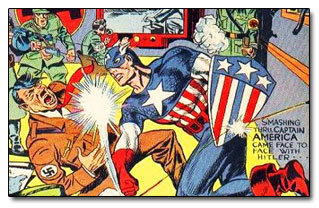
We no longer see Nazis as a common villain in comic titles, nor do we see the anti-drug push of the 1960’s. These battles have become dated, fictional plot lines tied directly to a once present evil in our world. It is interesting that in spite of a changing cultural landscape the effects of loss and trauma are still a common theme in comic books. It suggests that these things are universal human experiences, and as our world evolves they remain present. This is another area in which comic books serve as a useful tool. Through tracking the history of superhero conflicts, we see what the culture of a given time period found truly threatening. We watch heroes fluidly transition from fighting Nazis, to organized crime bosses, to subtly combating underlying ideas of racism, sexism, and homophobia. The one threat that has remained constant is personal choice and how our own moralities define whether we are a positive or negative force in the world.
Even the most recent of comic titles stress the importance of doing what’s right even in the face of deep personal pain. Each generation that grows up with these stories is given a message: chose to do the right thing, come whatever. Characters that stress honesty, compassion, courage, and mercy relay personal virtues that readers can carry into their own lives. Batman chooses to never kill, which can easily be translated to a bullied teen never seeking revenge or turning to cruelty. This does not mean that heroes always have to do the right thing or be perfect examples of virtue. In fact, it is more effective to see heroes struggle, lose control, and occasionally fail. It gives us hope that even when we do the wrong thing there is redemption and healing on the other side.
At the end of The Killing Joke Batman struggles with breaking his rule of never killing, leaving it to the audience to decide whether or not he harms the Joker. Seeing Batman face this inner desire is crucial to understanding what makes him good. He, like all of us, faces doing the wrong thing and pushes himself to turn away.
The Morally Ambiguous Characters
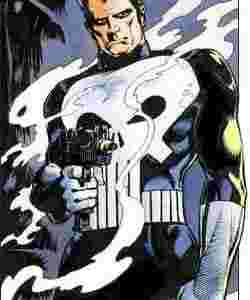

There are plenty of comic book characters that dance back and forth on the line between hero and villain. The Punisher is a perfect example. His identity as a vigilante is formed out of the loss of his family. Though he chooses to become a defender of the innocent, he gives in to bitterness and anger, thus making his view of what is and is not innocent flawed. He kills, tortures, and maims; living by his own moral code.
While he may not have become the sort of text book villain that searches to create chaos, The Punisher proves that giving in to a darker and more cynical self can blur the lines of right and wrong. He does not represent the same mercy and courage as a vigilante like Batman. He toes the line, somewhat unbalanced and halfway immoral.
Another character that closer favors the villain side is Rorschach from Moore’s Watchmen. Like The Punisher, Rorschach considers himself a defender of the innocent; however, he has a very limited view of innocence. Rorschach’s traumatic childhood leads him to view any wrongdoing as a death sentence. He kills lightly, foolishly equating imperfection to evil. Rorschach is just as likely to murder a pedophile as his is to murder a common shoplifter. Though many still consider him a commendable hero, he does not represent the same sort of goodness in the face of imperfection as Batman. Batman may make wrong calls, terrify villains, and lose his temper, but Rorschach lacks the discipline and compassion necessary to be a true moral role model. He is a personification of how dangerous extreme views can be, even when they extremely favor what is perceived as good.
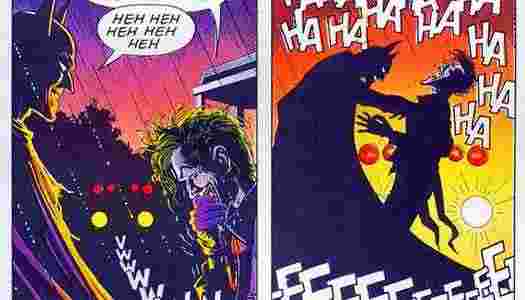
The Joker and Batman may battle each other into the next century; both fighting to prove that the world is the sort of place their trauma has lead them to see it as. In their representation we find ourselves, the damaged and flawed reality of humanity with endless potential to change the world. As we stare into the horizon of a new era of comics, many fans question what sort of messages writers should be including in their stories. Readers have begun to push for diversity and inclusion; which raises the question of how much moral responsibility comic writers, and fiction writers in general, have to their readers. We wonder what sort of society our generation of comics will reflect back to those that come after us, and worry about fiction shaping moral consciousness. As long as heroes stand on the side of fighting to do the right thing it seems that comics are on a good path. Over and over again we have seen characters have “one bad day” as readers experience their own ‘one bad day’ in real life. Fortunately, our heroes have never let us down completely and continue to combat trauma and loss with conviction; carrying a message of moral tenacity to the masses.
What do you think? Leave a comment.
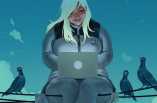
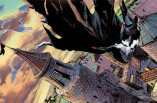
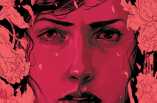
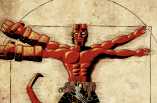

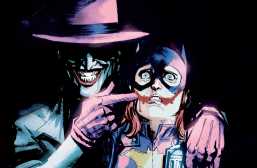
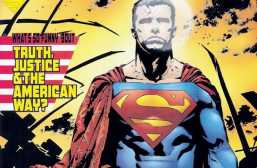
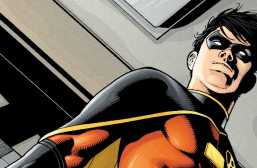
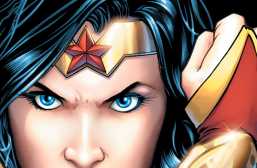
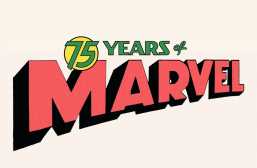
Really good writing, I especially loved the ending of the novel.
Wow great analysis. This is only my second Batman comic I’ve read (the first being Batman: Arkham City, the prequel to the videogame), but I’ve been exposed to a lot of the Batman mythos from the ’90s cartoon, movies, and recent direct-to-DVD animated films (which are all pretty great).
My first graphic novel (read). Man, was it beautiful.
My son made me read this. It’s his favorite graphic novel, so I just had to oblige. I love all the Batman movies, so I was really looking forward to it. I have to say that it was better than I expected.
Very well-written article. It is amazing the effectiveness The Killing Joke has even to this day. For a story that is very short, there is a lot to analyze and deconstruct. This was the first real story to analyze the Joker as a character and his twisted philosophy. This is extremely dark for a Batman story, and it is well-recognized for a reason.
To this day, I still haven’t gotten around to reading the particular story. It’s so well loved, I do worry that it would turn out disappointing (sometimes hype can do that for me).
Antagonists are characters that go against the protagonists. Although they are perceived as ‘evil’, they believe that their perspective is correct and usually justify it from their own back stories. So for Joker, Batman is the ‘villain’, and you perfectly explained why Joker thinks of Batman as his nemesis.
It is unfortunate that I do not read the comics, but you have done a great job analyzing ‘The Killing Joke.’ Great work!
The godfather of comic books, Alan Moore!
Comic books are problematic. Always have been for the female reader. This book is no different, unfortunately.
I’m not sure how this comment is relevant as this article in no way discusses female characters/ gender issues. That being said, there is a lot of work on Barbara Gordon who has recently been revitalized and remedied in her most recent title. So I suggest you read that.
this might be more relevant https://the-artifice.com/women-in-refrigerators-killing-females-in-comics/
This is probably the best comic, sorry, “Graphic Novel” I have ever read.
Moore and Bolland do a scary Joker!
Moore’s Joker dialogue is perfect.
Great exploration into possibly the most beautiful villain in all comic books, due to the fact that everything he says is a poignant description of humanity. The futility of life and what not has driven him crazy, why won’t it do that to us?
It’s a masterpiece GN.
i have so many things to say about this so, logically, i’m not going to say anything
These two characters, The Joker and Batman are not only antipodal to each other, but they also represent the two extremes of human nature in terms of morality. I enjoyed how you explored the character’s psyche and pair it with their struggles both inner and external. I think one particular reason on why these characters are so interesting is because of those struggles and their never-ending resistance to change or to give in to the other character way of thinking. Is interesting to see how these characters react to that “one bad day” and how that turning point on their own fictional lives keeps on hunting and affecting them. However, although it may be interesting and fascinated to read, it does make you wonder how you would react to that “one bad day”, whether you will embrace and become the darkness or live among the darkness but always looking for the light.
Thanks for the article, I really enjoyed it.
Phenomenal.
This was a fine bit of surreal weirdness.
I don’t believe Moore ever imagined the repercussions his piece would have on the greater Batman universe. It did have an impact however, for better or for worse.
Short and satisfying.
I am not sure if I should call the Joker as the villain. He is much more than that. Killing Joke just gets the best out of him.
One of the best batman stories in comics!
Hated this comic. You expect the grand finale but are given a pathetic excuse for a climax. The book is also wanting in its plot, there is nothing between the pages.
Brutal, shocking and twisted!
Alan Moore isn’t my favorite comics writer but this take on the Joker was really good for a short comic.
I always believed that the Batman character was much stronger in the comics than the movies. At least till Batman Begins and specially Dark Knight. The quandary Batman faces was brought to the movies only in these recent movies. Otherwise, it’s mostly the villains who run the show.
The interpretation of someone becoming a hero or villain in response to pain is really powerful. I wonder if, in the future, there will be more moral ambiguity in heroes and villains in comic books; people who have a negative reaction to that pain, but who are not totally “evil.” Good point about the danger of extreme views for the sake of what is “good,” too.
Alan Moore is such a super talent.
Alan Moore has done a fantastic job with The Killing Joke, although personally it’s one of the most darkest points in Batman’s time as a super hero. It’s not because of the suddenly changed role of Barbara Gordon; the then Batgirl now revived in the New Batgirl series by Cameron Stewart and Babs Tarr, but of the philosophy that Joker puts onto Batman. We all know, if you have read the shenanigans of Joker and Batman long enough, that they are two sides of the same coin; the brooding dark knight with his clown jester trying to crack a joke out of him. But here, we see the “origin story” (I’m putting this lightly because there’s the Moore story, and then there’s Batman: Arkham Origins, which, I’m going to say was not the best story in the Arkham series.) and how he had the one “bad day” that changed his life forever. Philosophies and humanity are exposed as the two duke it out, until the bittersweet ending of Joker finally being locked up in Arkham, even though that it never was penciled in.
BEAUTIFUL BEAUTIFUL COMICSSSSSSSSSSSSSSSSSSSSSSSSSSSSSSSSSSSSSSSSSSSSSSSSSSSSSSSSSSSSSSSSSSSSSSSSSSSSSSSSSSSSSSSSSSSSSSSSSSSSSSSSSSSSSSSSSSSSSSSSSSSSSSSSSSSSSSSSSSSSSSSSSSSSSSSSSSSSSSSSSSSSSSSSSSSSSSSSSSSSSSSSSSSSSSSSSSSSSSSSSSSSSSSSSSSSSSSSSSSSSSSSSSSSSSSSSSSSSSSSSSSSSSSSSSSSSSSSSSSSSSSSSSSSSSSSSSSSSSSSSSSSSSSSSSSSSSSSSSSSSSSSSSSSSSSSSSSSSSSSSSSSSSSSSSSSSSSSSSSSSSSSSSSSSSSSSSSSSSSSSSSSSSSSSSSSSSSSSSSSSSSSSSSSSSSSSSSSSSSSSSSSSSSSSSSSSSSSSSSSSSSSSSSSSSSSSSSSSSSSSSSSSSSSSSSSSSSSSSSSSSSSSSSSSSSSSSSS
CLEARLY A SNAKE WROTE THAT LAST ONE AM I RIGHT NIGEL MATE?
i used to draw joker for fun lol
I disagree with your statement that the punisher blurs the line between hero and villain because his methodology is the truest representation of vigilantism in comics. Frank is a guy who takes the skills he has and post origin uses those skills to get absolutist justice.
Does Rorshach actually kill any “common shoplifters” in Watchmen? He is certainly aggressive, but he also kills with purpose. Rorshach is clearly an alternative version of Batman without compunction about killing.
The animated film version of Under the Red Hood captured Batman’s logic well: if Batman kills even someone as evil as the Joker, he knows that he will never stop.
It’s interesting to compare this to Superman’s killing of Zod at the end of Man of Steel. Superman appeared to have no choice but to kill Zod, and one could argue that Superman could have saved lives by killing Zod earlier.
This was a wonderful read. ‘The Killing Joke’ has tremendous insight into morality and you presented a wonderful analysis. Thank you!
Spectacular read!
Really great read, but it makes me wonder… what if some people reading the comics have a different hero? A.K.A the “evil character.” And instead what to strive to relate to and be like them?
Very compelling article! Something I thought about though while reading this phenomenal work is whether the binary between “Hero” and “villian” is really all that big of a distinction between Batman and the Joker in the Killing Joke. They both had “one bad day” and while Batman did certaintly react in a different way, he still does react violently and against the law as a vigilante. Bruce Wayne could have very well used his wealth to reform the city like his parents did, but instead he chose to hide behind a created identity to enact his vengeance against the city. Is Batman a hero, or someone that just enancts his aggression in a sociably exceptable way? Anyway, just some food for thought! Wonderful article and analyses in one of the greatest tales in Batman’s cannon!
Killing Joke is a touchstone in the Batman my this and you have a wonderful analysis of it!
Great article. I relate this to the death of The Joker in the Batman series. The Joker and Batman will always be a treasured masterpiece in comic history.
In the world of a comic books, the writers and artists have the ability to express themselves. Dive between, and explore the lines between right and wrong, sane and insane. In a fictional world characters can be painted and portraid in ways that can explain deep inner emotions and feelings of writers and artists.